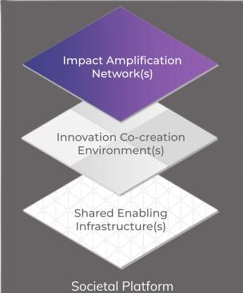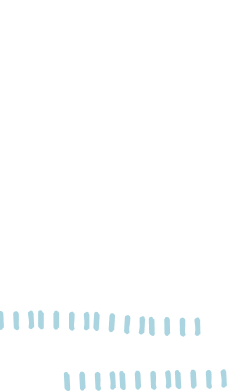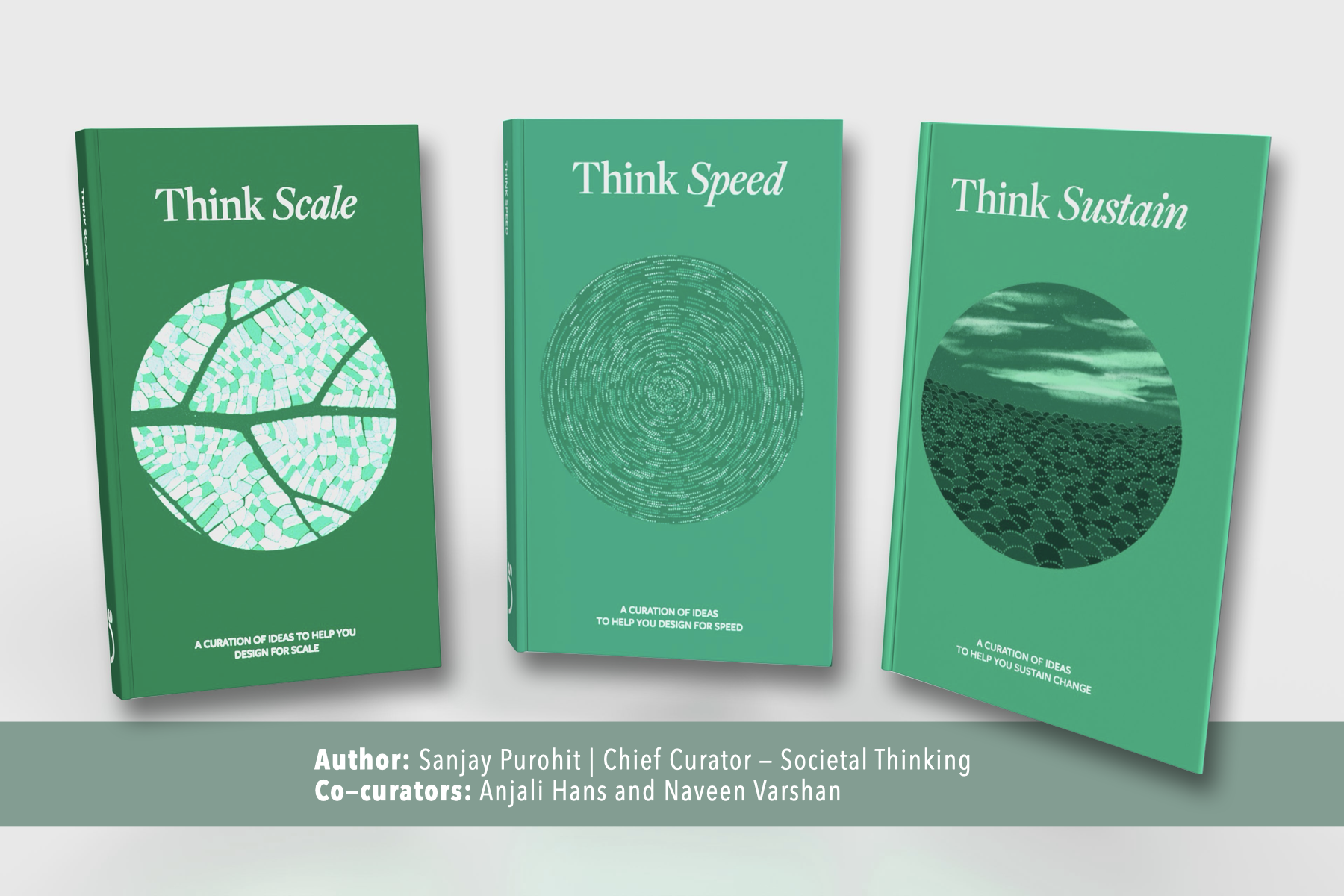If on a winter’s night, a traveller is in search of a room to rest and a bite to eat, she will press a few buttons on her phone. It is not (entirely) by miracle that within the hour, she will check into a B&B and eat a piping hot bowl of soup in front of the TV. Now, intrepid travellers like her and average daily commuters like me don’t usually have much in common. What does tie us together is the way we access services, no matter if she is in the Alps and I in Bangalore. From groceries to doctor’s appointments, cabs to courses, the word platforms have become central to our social and economic life. Even so, for the longest time, for me, a platform was equal to the app I used on my phone, where some techies were magically making it easy for me to hop into an auto anytime, anywhere. But when I joined Societal Thinking, I learnt platforms aren’t (just) about tech, they’re about connecting people. Specifically about connecting networks of people.
Currently, most commercial platforms we use aggregate these networks of people and make it easy for them to interact with each other. Say I own a platform for shoes. I will simplify and incentivise sign-ups for people who make shoes and for people who want to buy shoes. And, because I want to make a profit, I will curate choices for users, recommend the price for products such that buyers prefer my platform over others, and try to hold on to my network of providers and consumers. Aggregation, thus affords platform owners more power to make meaningful decisions for both buyers and sellers. This means that power lies disproportionately with this one entity – the platform owner. They can decide who gets to interact, with whom, how and when. This is exactly what we wanted to flip in 2016 when we mused: What does it take for a platform to work in service of society? How can a platform change the current balance of power by giving it back to the communities?
From aggregation to orchestration
StoryWeaver is a Societal Platform that connects storytellers and readers. Instead of exerting control over the creation and distribution of stories, StoryWeaver distributes the ability among its diverse network to take what works for them, adapt it to their needs and take it forward (even form micro-networks). As a Hindi-speaking reader, for example, I can leverage the platform’s digital capabilities (such as Unicode for translation) to take any of the pre-existing stories, translate them from their original language to my own and use them however I please. More so, someone else can use my version, mix it with another story and create a completely new reading experience in a different context and language.
What this enables for me – as a reader and a storyteller – is agency, dignity and choice. I need not be a recipient of stories written for me by someone else who may not share my lived experiences but can be an active participant in creating what I want and/or need.
As of 2024, StoryWeaver hosts over 50,000 stories in 300+ global languages that have been read over 150 million times. All stories are freely available in multiple formats and can be read online and offline, remixed to create new stories and translated into almost any language. In under a decade, it has become the world’s largest open platform for children’s storybooks.
But, how does a Societal Platform work?
We think of Societal Platforms like WiFi and commercial platforms like an hourglass. The two sides of an hourglass represent supply (sellers) and demand (buyers) with the platform owner being the stem – the intermediary between these two users. WiFi, on the other hand, illustrates openness and expansion – the 3 layers in the symbol are interdependent and grow on one another. WiFi is a model of empowerment, not control.
Thinking WiFi with the Societal Model
It goes without saying that social problems are large and affect different communities differently. Thus, even though we wanted to leverage platform thinking, we had to think of platform design in a way that would restore the agency of these communities to solve the problems they face.
As we travelled with change leaders on this journey, we crystallised all our learning into a framework that gives us a pathway for creating rapid and irreversible change at scale – by bringing together across civil society, government and markets, leveraging shared capabilities and inducing network effects. We call this the Societal Model.
Here’s how it works:
- Shared Capabilities: This is the infrastructure that is open and configurable that solvers can leverage to build upon and extend. This could look like building blocks such as Sunbird or interoperable protocols such as Beckn.
- Co-Creation Ecosystems: These are open collaborative spaces where different actors can develop solutions fast and more efficiently. In this space, actors can use pre-existing infrastructure capabilities and shared resources to build their own solutions on top. Actors across civil society, government and markets can pool resources, mix and match as well as create new solutions.
- Societal Networks: These are pathways to amplify the benefits of solutions co-created by societal actors to everyone so that people closest to the problem are able to solve it however and whenever they need.
The Societal Model is at the heart of Societal Platforms. Coupled with our Core Values and design principles, it offers us a scaffolding to design for impact at societal scale, with actors across society.
We’ve co-travelled with many change leaders to enable impact at scale, with speed and sustainably with Societal Platforms. See them in action here.
 Back
Back



